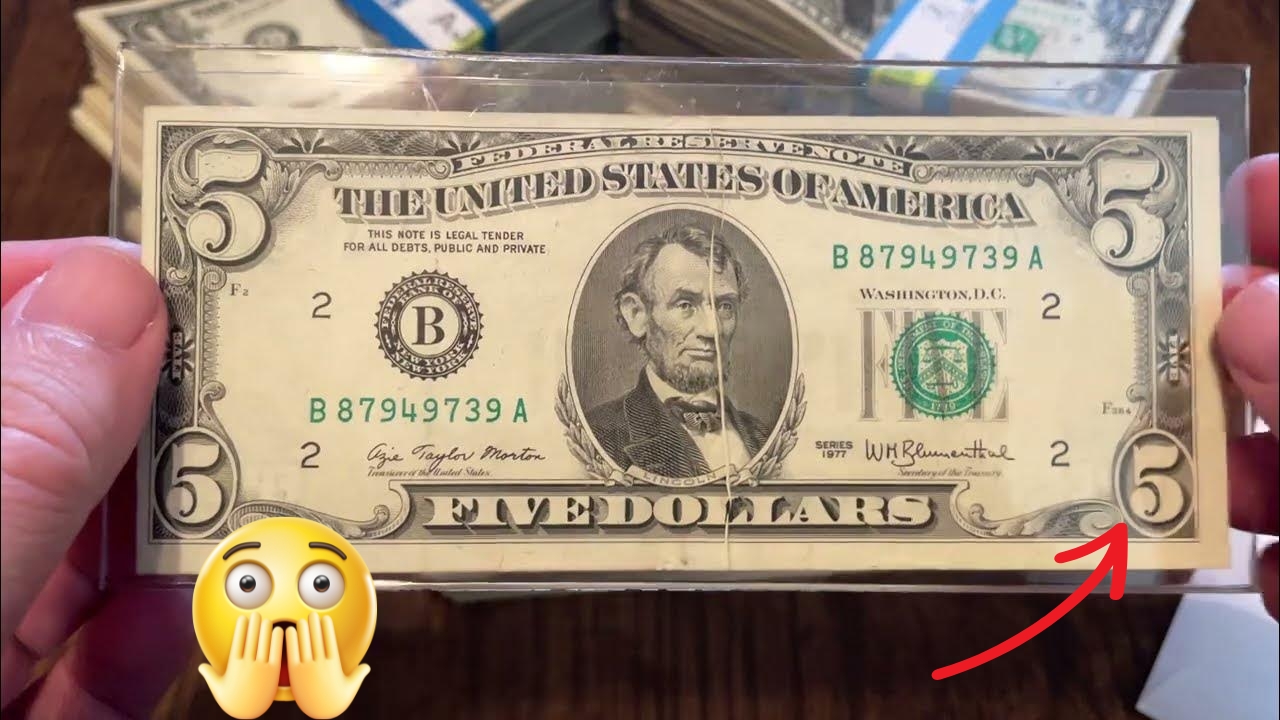When Kevin Morris, a 41-year-old mechanic from Nebraska, pulled out his wallet to pay for breakfast on a typical Monday morning, he never imagined he was holding a fortune. The five-dollar bill that caught his attention would eventually sell at auction for an astonishing $95,000—all because of a rare folding print error that transformed this ordinary note into a highly sought-after collectible.
Understanding Fold over Print Errors
To the untrained eye, the note might look like a printing mistake or damage caused by being left in someone’s back pocket for too long. But in the world of numismatics (the study and collection of currency), a fold over printing error is a rare and valuable mistake.
During the high-speed printing process at the U.S. Bureau of Engraving and Printing, a corner of the sheet on which the note is printed accidentally folds or crinkles. The result? A portion of the design prints over the folded edge, leaving a portion of the note blank or misaligned.
The Printing Process Behind Currency Errors
The Bureau of Engraving and Printing operates sophisticated facilities that print billions of dollars – referred to as Federal Reserve notes – each year for delivery to the Federal Reserve System. Currency notes are printed one stage at a time. There are typically three printing stages for U.S. currency:
- Back printing – The reverse design
- Face printing – Portrait and border elements
- Overprinting – Seals and serial numbers
How Fold over Errors Occur
Sometimes, a piece of paper gets folded as it reaches the printing press. And this creates a printing fold error. These errors happen before the inking process, creating distinctive patterns when the paper is later unfolded.
Currency Error Values and Market Data
| Error Type | Rarity Level | Typical Value Range | Highest Recorded Sale |
|---|---|---|---|
| Fold over Print Error | Extremely Rare | $500 – $50,000+ | $91,000 (2024 $5 bill) |
| Missing Print Error | Rare | $200 – $5,000 | $15,000+ |
| Mismatched Serial Numbers | Uncommon | $100 – $2,000 | $8,000+ |
| Gutter Fold Error | Common | $50 – $500 | $2,000+ |
Authentication and Grading
On the advice of online collectors, Kevin sent the note to PMG (Paper Money Guarantee), one of the most trusted grading organizations for currency. Professional authentication ensures legitimacy and significantly impacts market value.
What Makes Currency Errors Valuable
These errors are extremely rare, especially on newly issued notes like Kevin’s 2024 $5 note. The clarity of the note and the sharpness of the printing made it even more special.
Key Factors Affecting Value:
- Rarity – How frequently the error occurs
- Condition – Crispness and preservation quality
- Visibility – How noticeable the error appears
- Demand – Collector interest in specific error types
What to Look For in Your Wallet
Pay attention to: Folding errors – Check the corners and edges of your notes. If any part is misaligned, cut or blank and some parts are printed oddly, it could be folding. Mismatched serial numbers – There are two serial numbers on every note. If they don’t match, that’s a big red flag (and a potential jackpot).
The Treasury Department and Federal Reserve work closely with the Bureau of Engraving and Printing to maintain currency quality, making genuine errors increasingly rare and valuable.
Frequently Asked Questions
Q: How can I verify if my bill has a genuine error?
A: Submit it to professional grading services like PMG or PCGS Currency for authentication and encapsulation.
Q: Are all currency errors valuable?
A: No, condition and rarity determine value. Damaged or common errors may only be worth face value.
Q: Where can I sell error currency?
A: Reputable auction houses, certified dealers, or specialized currency auction platforms provide the best markets.
Also Read:-Rare Kennedy Half Dollar Spent on Snacks Later Sells for a Shocking $980,000
